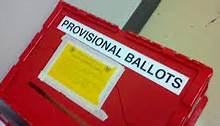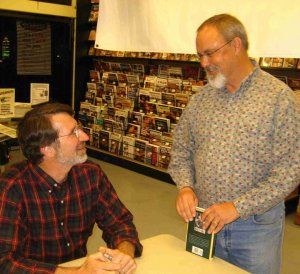 There is comfort in seeing the world as black and white. When the duties of election administrators require decisions, solutions which are black or white are highly preferred. Shades of gray, interpretation of rules and codes, and the use of discretion are fatuously avoided. No administrator wants to take unnecessary risk or to explain and justify a decision. Bureaucrats and administrators carefully seek out simplistic and unambiguous responses from statutes, procedures, precedents, and even the practices of others.
There is comfort in seeing the world as black and white. When the duties of election administrators require decisions, solutions which are black or white are highly preferred. Shades of gray, interpretation of rules and codes, and the use of discretion are fatuously avoided. No administrator wants to take unnecessary risk or to explain and justify a decision. Bureaucrats and administrators carefully seek out simplistic and unambiguous responses from statutes, procedures, precedents, and even the practices of others.
A fundamental premise of this decision making style is that the right answer can be found in rules and statutes and, further, when an answer is found in the rules (or in past practices or best practices), it is, by definition, the right answer. The right answer is the answer that stands on its own without the decision maker having to accept any responsibility for the answer, i.e. “the codes says…”, “past practice is…”, “other jurisdictions do…”, etc.. The ability to insulate oneself from the consequences or criticism of a decision is not the sole advantage, however, in the minds of those who employ this approach.
There is a normative mindset inherent in those who demand black and white and eschew shades of grey which condemns the interpretation and application of rules and laws. This approach condemns permissive interpretations and liberal construction of the election code, even when the code provides a range of solutions or directs the application of judgment based upon facts for specific cases. In this framework, there is no discretion and interpretation is always wrong. Those who maintain this approach see not only the decisions based upon interpretation and discretion as wrong but also see those who would interpret and use discretion as being corrupt and unethical.
The presumed moral superiority of those who read rules and laws restrictively and who assume to correctness and “rightness” of pat answers is based upon a false sense of neutrality that such an approach provides. This view is steeped in the tradition of the politics-administration dichotomy which dominated late 19th and early 20th century public administration theory. Political leaders made the rules and laws based upon a mandate received by the electorate and the role of the virtuous administrator was to faithfully, and with neutrality, implement the will of legislators. This theory assumes that all situations can be/should be/are addressed in legislation and that the legislators have the expertise to provide technical solutions to complex questions. Scholars, ethicists, legislators and administrators have all recognized practical and theoretical limitations of governing in this manner but the mindset persists in many current administrators. It is these administrators who I refer to as bureaucrats.
Bureaucrats do not seem to realize that, in an attempt to avoid errors of discretion and interpretation, they themselves make their own interpretations and use their own discretion. They use to use choose restrictive and literal interpretations regs, rules and laws even when these decisions are not consistent with facts or with other sections of code.
There are two important points I am trying to make in this post. First, a literal, restrictive, black and white reading of governing documents for decision and policy making is equally, although unconsciously, interpretive and discretionary as the approaches of deliberate interpretation and the conscious use of administrative discretion. There is no legal, ethical or moral high ground to be gained by appeals to literal readings when there is space for interpretation. In fact, the opposite may be true.
Let me refer to a recent discussion regarding the mailing of information to voters pertaining to a specific election. The Election code directs administrators to mail the material to voters as early as 40 days prior to the election. At the time the code was written, the deadline for registering was 29 days prior to the election and there is a provision in the code that indicates that voter information should be sent to everyone registered 29 days prior to the election. Since that time, the registration deadline has been moved to 15 days prior to the election but the practice of cutting off mailing voter information at 29 days continues in many places. When I asked why people who register between the 15th and 29th day don’t get voter information, I was told that the 29 day cut-off was interpreted to prohibit sending voter information even when new voters were legitimately registered and there were adequate time and resources to do the mailing. The suggestion of mailing to these voters was perceived to be provocative and subversive, not to mention reckless.
To be clear on the matter, the code did not direct nor did it prohibit mailing information after 29 days. It was simply interpreted to mean that registrants after 29 days would not be mailed the same information that other voters received. At some point in time the 29 day cut off made sense but over time, as other laws changed and printing and mailing technologies evolved, the interpretation somehow evolved to a prohibition on mailing to these voters. When I challenged this interpretation by asking why it was good service and good policy to withhold the mailing, the answer was predictable– “the code says…” When I pointed out that it was actually cheaper to do the mailing after 15 days, it reduced returned mail, and it was a greater service to voters; I received a slightly different yet obstinate response-“the code doesn’t say we can….”
My second point is that hiding behind a literal or black and white interpretation sets up intransigent and counter-intuitive policy positions that serve no public interest and often result in high visibility lawsuits which are costly and undermine confidence in our institutions. There are many notable examples: the 2004 San Diego County case in which clearly legible write-in votes were not counted, reversing the apparent outcome of the election, because the write-in votes were not machine readable (the bubble was not filled in) but were clearly human readable; the 2009 Hamilton County, Ohio case in which provisional ballots were not counted because the ballot was cast at the right polling place but the wrong precinct ballot was used (even though the ballot contents were identical); and the 2012 Allegheny County, PA case in which reporters were banned from entering a polling place and reporting on voting on Election Day. The list could go on and on.
Good elections are based upon good decisions- not bureaucratic decisions. Good decisions are based upon an ethic that seeks the protection of constitutional principles, individual rights, and the respect for the rule of law.
Stay tuned.





